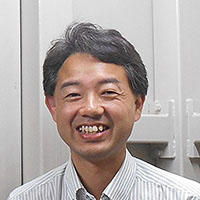
It was when I joined The Condensed Matter Research Center (CMRC), the predecessor of CIQuS, from its inception in 2009 that I conducted my first multi-probe research. Until then, I had been working exclusively with synchrotron radiation, especially soft X-rays, but in March 2012, we performed the first polarized neutron reflectivity experiment at the MLF in J-PARC, where many scars from the earthquake still remain. The beamline used was BL17 (SHARAKU), and we were the first user of BL17 and the first user of the MLF by the staff of the Institute for Synchrotron Radiation Research. I remember fondly the time when we held a stamp rally. I felt that this was the "wall of the multi-probe" which is so good at sound. Of course, the procedure was not completed in one day, but it seemed that our presence was known throughout the J-PARC, and we were warmly welcomed by everyone at every checkpoint. With the help of the Beamline staff, I was able to achieve the results a year later, and I have been a heavy user for many times since then.
My case in 2012 is a special case, but unfortunately, the "multi-probe barrier" still exists even now, even after nearly ten years, and this is true even for the staff of the National Institute for Materials Structure Research, who have four probes. However, for many researchers, it is not easy to get over the wall. One of the objectives of CIQuS is to make the barrier as low as possible and to help researchers inside and outside of BSS to overcome it. One of the pillars of CIQuS is "discovery-type joint use," which encourages the use of multiple probes by "discovering" cases in which the use of multiple probes is effective among users' experiments with a certain probe. Rather than simply introducing other probes, this is a challenging project that aims to promote the use of multiprobes through collaboration between users and the Center's staff. The other pillar of this project is "Theme-based Collaborative Research," in which staff members of the National Institute for Chemical Structure Research (NIMS) set their own research themes and collaborate with researchers in Japan and abroad to solve problems. Through these efforts, we hope to promote internationally unique multiprobe collaboration and produce young researchers who will play an important role in multiprobe research.
The keyword "collaboration" in "Center for Collaborative Research" has two meanings: collaboration between quantum beams (multi-probe applications) and collaboration between researchers of various organizations (industry-academia-government collaboration and international collaboration). Through these two collaborations, we will strive to establish the center as a foundation for creating an attractive science.
Apr. 1, 2020
Kenta AMEMIYA